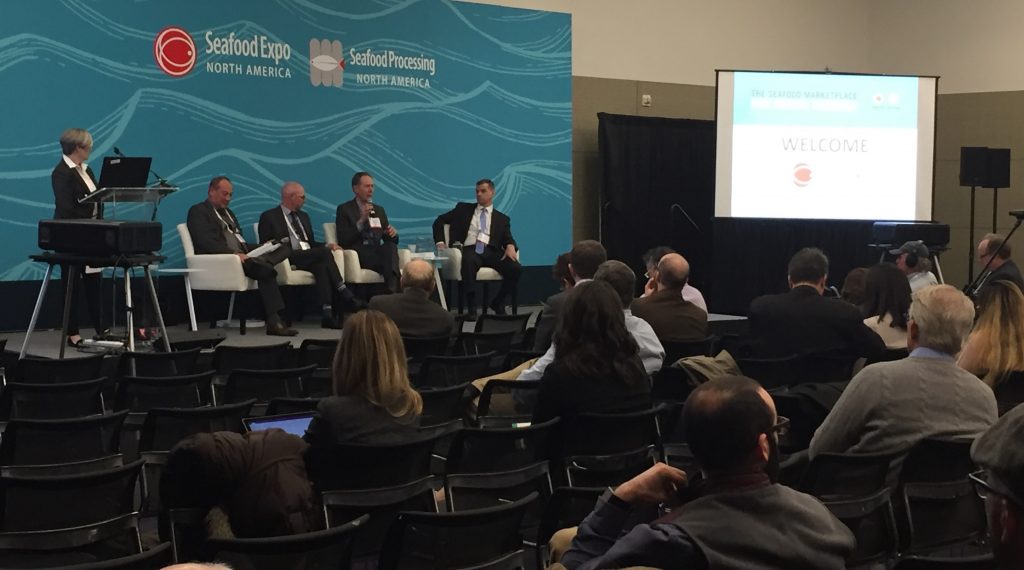
NOAA on the future of marine aquaculture
June 4, 2018
By Matt Jones
Michael Rubino discusses two essentials that will help advance the fledgling sector.
 Michael Rubino
Michael Rubino Federal nutrition guidelines recommend that Americans should double their seafood consumption. This presents a significant challenge at a time when 91 percent of seafood is imported into the country. Dr Michael Rubino, Director of NOAA Fisheries Office of Aquaculture, who recently spoke on this topic at the Seafood Expo North America in Boston, spoke with Aquaculture North America (ANA) about the challenges that NOAA sees on the horizon and the efforts to address them.
According to Rubino, acquiring the social licence to operate in the marine environment, and educating people about aquaculture are two major issues that need to be addressed to help advance aquaculture.
“We all grew up reading or having books read to us about the family farm – we grew up knowing what pigs, cows, chickens and horses are,” says Rubino. “We don’t know what an oyster farm is, or what a fish farm is. So there’s this cultural issue of the unknown. When we’re talking about marine aquaculture and using public waters, when you’re proposing new uses of public waters, it gets tough to find acceptable sites despite our long coastlines because we’ve got a lot of users of coastal space from recreation to boating to shipping to fishing to sensitive ecological areas and so on. How do we make room for aquaculture in our collective backyard? We need to if we’re going to address these challenges of increased seafood consumption and growing more at home instead of importing it.”
The social licence challenges are compounded by a complex regulatory system involving a variety of agencies, all with their own permitting processes. As a result, NOAA is pursuing three key actions to catalyze smart growth in the sector – streamlining the regulatory process, promoting regional partnerships and pilot projects, and promoting science and R & D.
While the need to streamline regulations and promote R&D are likely very well understood by anyone reading this magazine, the need for regional partnerships may be less immediately clear. Rubino cites one of the many examples of these sorts of partnerships.
“For example, the Port of Ventura, CA would like to set up a 2,000-acre pre-permitted area for mussel farming, either in state or federal waters off Ventura, and then sub-lease or sub-permit it to 10 to 20 mussel farmers,” says Rubino. “How can we work collaboratively to do this spatial planning, the site analysis, looking at gear types, and doing the National Environmental Policy Act work proactively so that the burden of proof is not on each permit applicant coming in. And then through our competitive grants, perhaps there’s some particular issues with hatchery bottlenecks that you could work with local universities or with private sector to get them over that hump.”
Rubino says that much of the work that needs to be done is already taking place in coastal communities. The changing demographic make-up in these communities — where the share of young people is increasing — helps form vibrant marine aquaculture communities. Rubino noted that a few years ago at the North East Aquaculture Conference, half of the 600 to 800 people in the audience was under 40. “There were a few graduate students in there, but a lot were young guys and gals, many sons and daughters of fishermen, or people from seafood business families, getting into aquaculture.”





